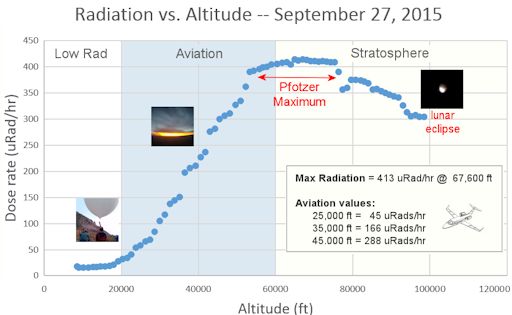COSMIC RAYS DURING THE LUNAR ECLIPSE:
On the evening of Sept. 27th, Spaceweather.com and the students of Earth to Sky Calculus conducted a routine flight of their cosmic ray payload to the stratosphere. Routine, that is, except for one thing: the balloon flew at night during a lunar eclipse. One of the goals of the flight was to compare radiation levels at night to those recorded during the day. Here are the data they recorded:
Compare this plot of radiation vs. altitude to a similar plot recorded in broad daylight only a few days earlier. They are almost identical. Radiation levels in the stratosphere matched at the 1% level. Radiation levels at aviation altitudes (where planes fly) agreed within about 3%. Night and day were the same.
This simple experiment highlights something that is already well known to researchers. Cosmic rays in Earth's atmosphere come mainly from deep space. They are accelerated toward Earth by supernovas, colliding neutron stars, and other violent events in the Milky Way. Flying at night is no safeguard against these energetic particles because they are everpresent, coming at us from all directions, day and night.
Bron:http://www.spaceweather.com/

 Kosmische straling gedurende de maansverduistering
Kosmische straling gedurende de maansverduistering




